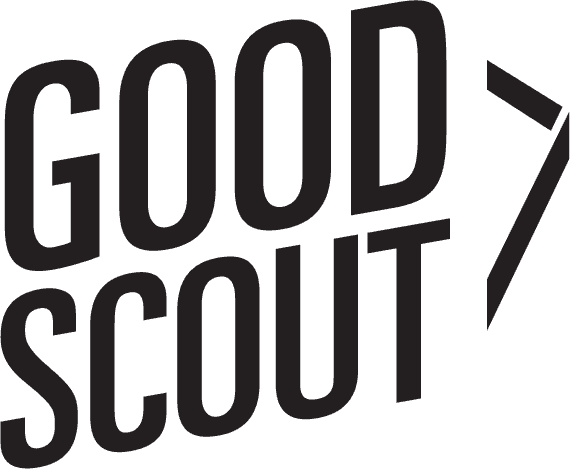One of the most common issues we see in nonprofit organizational development is a disconnect between mission delivery teams and fundraising teams. While both departments serve a crucial component of the organization, disengagement between the two areas—often entirely unintentional—can have a profoundly negative impact on the momentum of the mission.
More often than not, this siloed approach isn’t purposeful. Rather, it’s the byproduct of natural tension that results from two teams working in very different ways to achieve their priorities and goals. When fundraising and program teams lack effective communication or established processes for close collaboration and shared understanding, the divide can worsen.
As President and Managing Partner at Good Scout, Charisse Brown-Marcus possesses a wealth of experience in developing solutions to bridge the gap between these two teams while enabling each to focus on their core strengths.
Brown-Marcus joined with Berta James, a former VP of Mission Delivery and current nonprofit board member for multiple organizations, to exchange insights on learning to better collaborate and establish a strong working alliance between mission delivery and fundraising, advancing the mission of an organization.
Maximizing Impact Through Cross-Departmental Partnership
Internal cohesion in any organization is vital for obvious reasons: it saves time and energy and makes for a positive work culture.
Strong interdependencies between program and fundraising teams in a nonprofit are especially important. When balanced effectively, they promote a unified approach to fulfilling the organization’s mission and enhance donor relationships by aligning fundraising efforts with program impact, ultimately resulting in increased support and success.
Intentional collaboration can also have effects on the external perceptions of your organization.
“Donors expect a lot; they’re savvy,” explains Brown-Marcus. “Donors deserve to know that the person they’re talking to actually understands the mission impact, and they know where their money is going and what it’s going to do.” Disconnection between mission delivery and fundraising creates an inevitable lack of communication, which can have detrimental consequences on donor trust and transparency.
Step Into the Other Team’s Shoes
The best way to strengthen cross-departmental relationships is to create opportunities for nonprofit staff to learn the skills of the other team and develop empathy and understanding for the value they bring to the organization.
Brown-Marcus explains, “It’s not difficult to see how, for a program purist, fundraising may seem like selling a product, which can divert attention from the actual program work. The reality is that, to carry out program work and fulfill the mission, fundraisers play a pivotal role in making it possible. While certain boundaries and parameters concerning program language should be maintained, there are cases where the language used to communicate the program to a donor can and should be flexible. Ultimately, appealing to the donor will result in more funding for the mission.”
If you’re not sure where to start with improving the internal ties between your development and program teams, Brown-Marcus recommends a simple exercise to foster stronger interdependencies. She often guides fundraisers and program staff to ask the question, “How can I be of help to you?” to those in the other department.
Asking that question is just the beginning. Building affinity can be challenging without taking actionable steps for teams to explore the responsibilities of their counterparts. Taking the initiative to establish cross-team rapport is a positive step. It’s also highly probable that building a strong alliance between two departments accustomed to operating independently will require more than just a few meetings.
James shares an example of how providing hands-on opportunities for understanding can improve collaboration while supporting mission movement: “I know of an organization that supported people experiencing homelessness where the fundraising staff was so focused on numbers; they were getting to be kind of heartless. I recommended they take a morning and go help out at the food bank. They were able to focus on the mission and then, when they came back, they had that experience in their heads. Fundraisers need to be volunteers within the organization so they understand what’s going on.”
Remember that consistent opportunities for cross-team engagement, as well as regular collaborative meetings between program and fundraising staff, are crucial to maintaining cohesion.
Finding the Right Balance
Fundraising and mission delivery are already intertwined. However, whether they are functioning together in a healthy manner is a different matter.
Giving both teams opportunities to bring their needs to the table is a foundational pillar in ensuring clear communication. Many organizations depend on a structure that lets fundraisers lead the conversation, but it’s just as important to understand program needs before finalizing long-term goals.
“Start with the cost to deliver the mission and anticipated growth, and allow fundraising to create a budget based on that. Both sides have to be honest about what they can deliver,” says Brown-Marcus.
The key here is finding a healthy balance—leaning too far in either direction can negatively impact growth and cause burnout among staff members. While depending on fundraising to set the pace isn’t the answer, developing programs that are completely out of scope can just as easily cause resentment to re-enter the picture.
Regardless of your role within the organization, you hold the power to enhance the connectivity between those driving the mission and those supporting it through fundraising. The cultivation of internal cohesion between nonprofit program staff and fundraisers stands as a truly valuable asset, one that directly enriches your impact and growth potential.
Good Scout Group conducts workshops designed to bring program and fundraising teams together, enabling them to identify unique opportunities that can only emerge from their direct collaboration. If you want to assist your organization in identifying potential areas for improvement and harnessing internal strategies to generate momentum for your mission, contact our team today.
